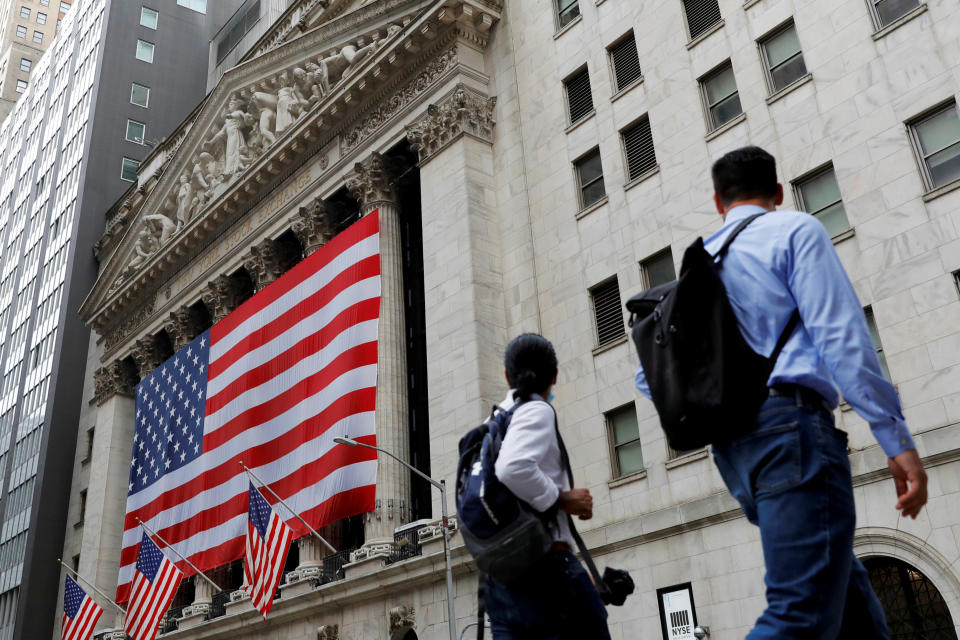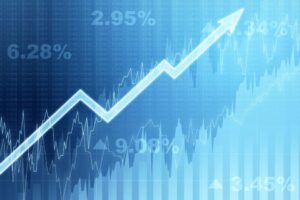Whipsaw week for stocks leaves markets ‘on edge’ ahead of busy economic data week

Last week, the S&P 500 (^GSPC) saw both its worst and best single-day performances of the year.
A sign to some on Wall Street that all is not well in markets right now.
On Monday, rising recession concerns, combined with a sell-off overseas, initiated a volatility spike and sent stocks tumbling, with the S&P 500 falling 3%.
On Thursday, stocks mounted their best one-day rally since 2022, rising 2.3% as a typically benign weekly unemployment benefit data release helped ease concerns about the economy.
DataTrek co-founder Nicholas Colas wrote in a note Friday morning that a rally of this magnitude following a report like initial jobless claims said “more about the stock market’s fragile state and nervousness about economic data than anything else.”
Renaissance Macro’s head of economics, Neil Dutta, agreed. “Markets are clearly on edge,” Dutta wrote in a note on Thursday morning. “We are rallying 1.5% today because of jobless claims! That’s unusual.
“If you get some downside surprises in the data next week … guess what happens? It will just fuel chatter back into the notion that the Fed is a bit behind the curve.”
The upcoming week will provide plenty of fodder for the current debate about the health of the US economy, with inflation data and retail sales data likely to serve as the week’s highlights.
Expectations are for the Consumer Price Index (CPI) to show inflation rose 0.2% in July while consumer prices likely increased 3% from the prior year. On a “core” basis, prices are expected to have risen 3.2% from a year ago, less than the 3.3% increase seen in June.
Retail sales, excluding autos and gas, are expected to have risen 0.2% month over month in July. This would mark a deceleration from the 0.8% sales growth seen in June.
Bank of America’s head of economics, Michael Gapen, highlighted in a note to clients last week that a soft retail sales print “may not excite markets, who remain conscious of downside risk.”
But given the large increase in retail sales in June, a weaker print still “leaves spending on track for a reasonably strong quarter,” per Gapen.
“Overall, should the data come in as we expect, we look for the market to price in fewer cuts this year and reduce the likelihood of a large cut in September,” Gapen wrote.
As of Friday, markets were pricing in a roughly 52% chance the Federal Reserve cuts interest rates by 50 basis points by the end of its September, down from a 75% a week prior, per the CME Fedwatch Tool.
Read more: What the Fed rate decision means for bank accounts, CDs, loans, and credit cards

After several months of data showing rising unemployment and other weakening signs in the labor market, markets have moved from fearing better-than-expected economic growth that could fuel inflation to cheering such data as a sign the US economy can skirt recession.
And if markets move to price in fewer Fed cuts and bond yields rise following next week’s data, that could be a positive catalyst for stocks given the market’s shift to an environment where bad is bad and good is good.
“Not only is good news going to be good, I think good news is actually going to be very good, and bad news is going to be very bad,” Piper Sandler chief investment strategist Michael Kantrowitz said in a video to clients on Friday.
“We’re going to see a lot of good days, a lot of bad days, and a lot more market volatility than we’ve seen most of this year.”
Josh Schafer is a reporter for Yahoo Finance. Follow him on X @_joshschafer.
Click here for in-depth analysis of the latest stock market news and events moving stock prices
Read the latest financial and business news from Yahoo Finance








